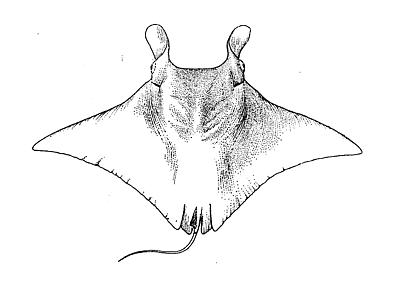To answer your second question first: Yes, these are mainly used for ground-effect craft. The idea is to have positive angle of attack, a tapered wing and a trailing edge with constant, low distance from the ground. This questionThis question covers their sweep angle.

The RFB X-114 ground-effect craft. Forward is right.
The wing would behave just like an ordinary, forward swept, low aspect ratio wing. It would have a small lift curve slopesmall lift curve slope and a lousy stall behavior, because the low tip chord will make the tips stall first, causing the whole wing to roll. Unfortunately, the low leading edge sweep will prevent vortex lift, which is a typical feature of regular delta wings, to develop, so the stall angle will be only little higher than that of a straight wing with the same aspect ratio.

Manta rays are more diamond-shaped, so their "wing" has positive leading edge sweep and almost zero quarter-chord sweep. Their stall behavior would also be nasty if they were rigid, but the wings are actually fins and used for propulsion, not lift, so stall does not mean that the fish plunges to the ground. The picture above shows an Atlantic manta and was shamelessly copied from Wikipedia.
